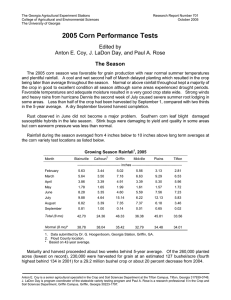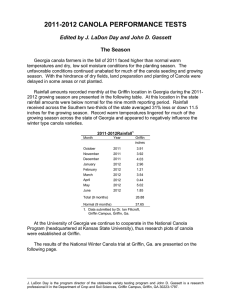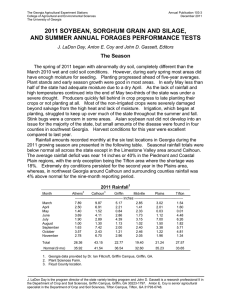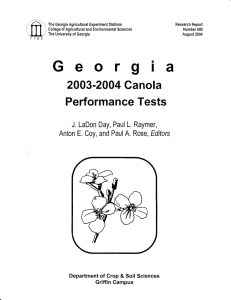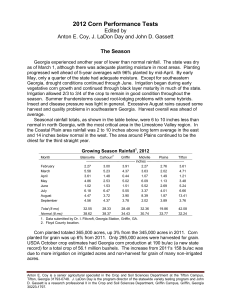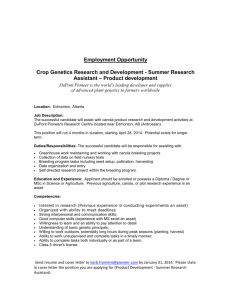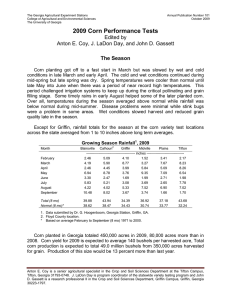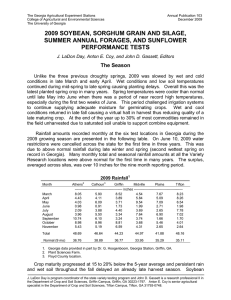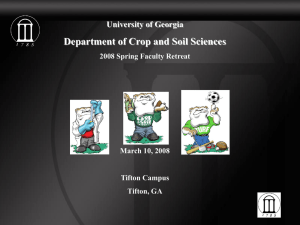Document 13150736
advertisement
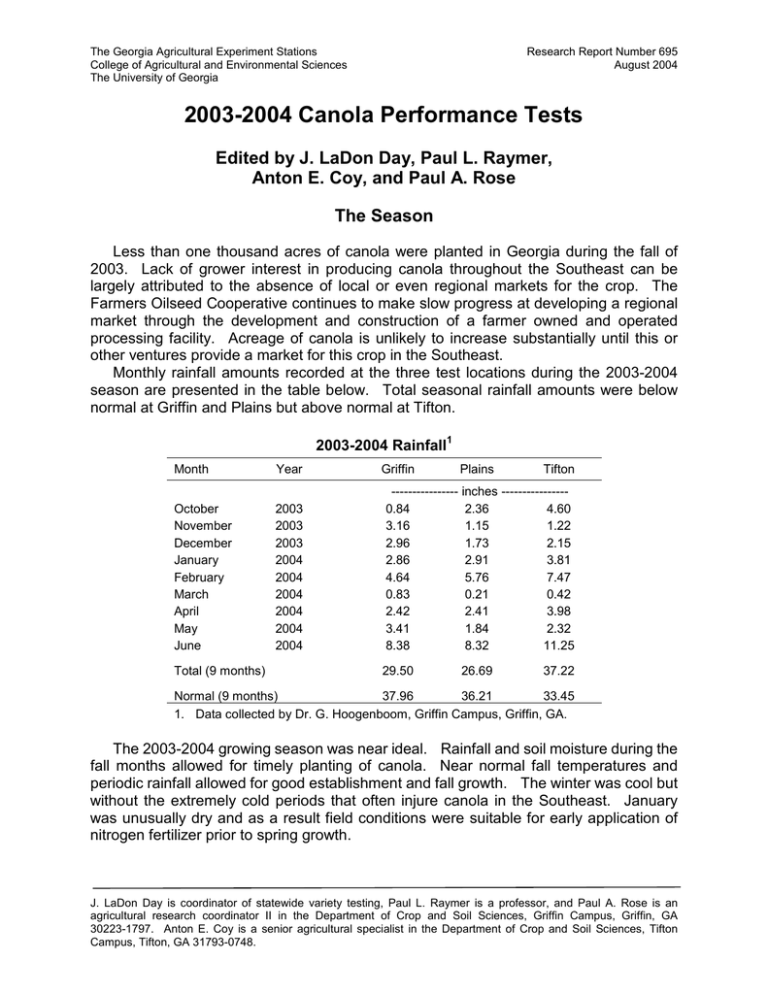
The Georgia Agricultural Experiment Stations College of Agricultural and Environmental Sciences The University of Georgia Research Report Number 695 August 2004 2003-2004 Canola Performance Tests Edited by J. LaDon Day, Paul L. Raymer, Anton E. Coy, and Paul A. Rose The Season Less than one thousand acres of canola were planted in Georgia during the fall of 2003. Lack of grower interest in producing canola throughout the Southeast can be largely attributed to the absence of local or even regional markets for the crop. The Farmers Oilseed Cooperative continues to make slow progress at developing a regional market through the development and construction of a farmer owned and operated processing facility. Acreage of canola is unlikely to increase substantially until this or other ventures provide a market for this crop in the Southeast. Monthly rainfall amounts recorded at the three test locations during the 2003-2004 season are presented in the table below. Total seasonal rainfall amounts were below normal at Griffin and Plains but above normal at Tifton. 2003-2004 Rainfall1 Month October November December January February March April May June Total (9 months) Year 2003 2003 2003 2004 2004 2004 2004 2004 2004 Griffin Plains Tifton ---------------- inches ---------------0.84 2.36 4.60 3.16 1.15 1.22 2.96 1.73 2.15 2.86 2.91 3.81 4.64 5.76 7.47 0.83 0.21 0.42 2.42 2.41 3.98 3.41 1.84 2.32 8.38 8.32 11.25 29.50 26.69 37.22 Normal (9 months) 37.96 36.21 33.45 1. Data collected by Dr. G. Hoogenboom, Griffin Campus, Griffin, GA. The 2003-2004 growing season was near ideal. Rainfall and soil moisture during the fall months allowed for timely planting of canola. Near normal fall temperatures and periodic rainfall allowed for good establishment and fall growth. The winter was cool but without the extremely cold periods that often injure canola in the Southeast. January was unusually dry and as a result field conditions were suitable for early application of nitrogen fertilizer prior to spring growth. J. LaDon Day is coordinator of statewide variety testing, Paul L. Raymer is a professor, and Paul A. Rose is an agricultural research coordinator II in the Department of Crop and Soil Sciences, Griffin Campus, Griffin, GA 30223-1797. Anton E. Coy is a senior agricultural specialist in the Department of Crop and Soil Sciences, Tifton Campus, Tifton, GA 31793-0748. Spring growing conditions were also excellent with cool temperatures persisting until well after flowering was completed. A brief dry period during early seed fill occurred in late March and early April. Irrigation was used at both Tifton and Plains to negate any negative effects on seed yield during this critical period. Cabbage seedpod weevils and aphids were observed in these trials but population never built to levels sufficient to require treatment with insecticides. The 2003-2004 growing season produced near record canola yields at all test locations. Seed yields above 90 bushels per acre were documented at both the Plains and Tifton locations. Seed oil contents at the Tifton location were also higher than normal. The test averages for total oil content were 43.0% and 44.3% for the two Tifton trials and total oil values above 45% were documented on several entries in the specialty oil test. Canola prices worldwide were also very high this spring. Growing seasons like this past one continue to confirm the potential for profitable production of canola in the Southeast.
